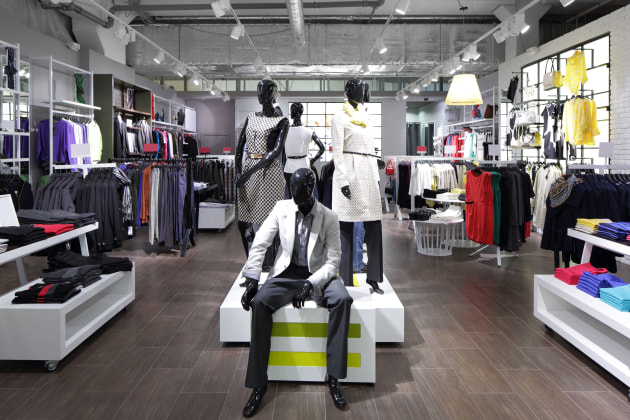Kissel + Wolf sales and business development director - digital Jon Field discusses the changes to the fashion industry that have arised from COVID-19.
It’s time for change says Jon Field, Kissel + Wolf’s sales and business development director - digital.
"No one would have declared that the fashion industry didn’t require some modifications at best, and more likely a significant overhaul," Field says.
"Although it’s unfortunate and there will be pain, perhaps it’s the down-turn the fashion industry needed to bring about radical change that’s required.
"For some people reading this article you may well be consumed by crisis management and have immersed yourselves in a plethora of contingency plans," Field continues.
"The fact of the matter is, that some companies will come through this incredibly challenging period, stronger and better prepared to flourish. Others will not be as fortunate and fall by the wayside.
"However, it’s not about the biggest companies surviving as they may well be hit the hardest.
"This is about understanding the new environment we will all be operating in and embracing it. It’s about being nimble and adapting to change.
"It’s about the industry getting the fundamentals right. It’s about innovating, becoming a smarter, more transparent and creating a closer-knit community.
"Get this right and who knows what the future may hold - perhaps this approach is the ray of sunlight amongst the dark clouds of COVID-19 that all industries need to consider, not only the fashion industry," he says.
Field believes, that reshaping the industry’s priorities and value chain post COVID-19 is a ‘non-negotiable’.
And there will be industry consolidation as there always is in times of pain and rapid change.
The opportunity to embrace technology, online fulfilment and the production efficiencies that DTG/DTF affords, becomes even more critical.
Reduce waste, add value and avoid discounting by providing your customers with increased value and satisfaction levels, across all the products and services you offer.
Where possible, expand your offering through strategic industry alliances and collaborations.

Key takeouts:
The new world of ‘green’
The latest forecast from McKinsey has 15% of consumers in the US and Europe expecting to buy more ecologically and socially sustainable clothing.
Brands that want to succeed must build a green and envi-ronmentally sustainable focus into their business models and business ethics.
Such as prioritising dealing with manufacturers who produce their garments on the most environmentally friendly equipment and minimise waste.
If they do this and successfully communicate it, they will have an opportunity to capture a greater captive audience than they ever imagined previously.
The rise in digital fulfilment
‘Social Distancing’ has created a greater emphasis on the importance of digital workflows and online channels.
A digital solution and capabilities across the entire value chain should now be a priority for all brands, fashion businesses and manufacturers, as it will continue to be post COVID-19 in the recovery phase.
It’s where more and more consumers will continue to ‘hang out’ and of more consequence, where they will transact.
Brands need to give thought to how they can own, dominate or at least influence this space and provide just-in-time production and fulfilment as it’s what consumers will expect going forward.
The need to innovate and focus, focus, focus on the customer
The need to innovate, understand and cater for consumers expectations post COVID -19 has never been more critical than it is now.
As an example, the need to capture the consumers mind when they are in a purchasing mindset, is more critical than ever.
Estimates by McKinsey has more than 65% of consumers in the US and Europe, expecting to decrease their spending on apparel, and more than 40% expected to decrease their total household spend.
So being ‘top of the consumers mind’ when a purchasing opportunity presents itself is not only vital, it’s a challenge to all brands and their marketing departments.
Combine this with an oversupply of unsold inventories and overladen warehouses due to the speed with which COVID-19 took its grip, and we will see discounting in an attempt to clear inventories, the likes that we have never seen before.
"For major brands, this highlights the many opportunities a post COVID digital environment presents," Field says.
"Add to this more bespoke shopping experiences through brands offering consumers the ability to ‘virtually’ create and try a product on prior to purchasing and paying for it through a brand's app, and it’s what consumers crave and will pay a premium for.
"For manufacturers opportunities will present too regarding just-in-time ‘onshore’ production, and more importantly, enabling manufacturers to produce on mass for a customer of one - every time, thereby eradicating waste.
"This is what consumers will be after.
"COVID-19 may well be the driver that brings about the end of ‘extreme consumerism’ too with the manufacturing and the buying of goods in large volumes becoming a thing of the past," Field says.
Herein lies a blueprint and some ‘pearls’ for the fashion industry and the new world business models of tomorrow.
Kissel + Wolf sells market leading Kornit DTG/DTF high volume digital printers.
For further information or enquiries on how you can successfully enter the lucrative direct to garment and direct to fabric (DTG/DTF) digital printing market, email sales@kiwo.com.au or call + 61 3 8318 5555 | kissel-wolf.com.au


